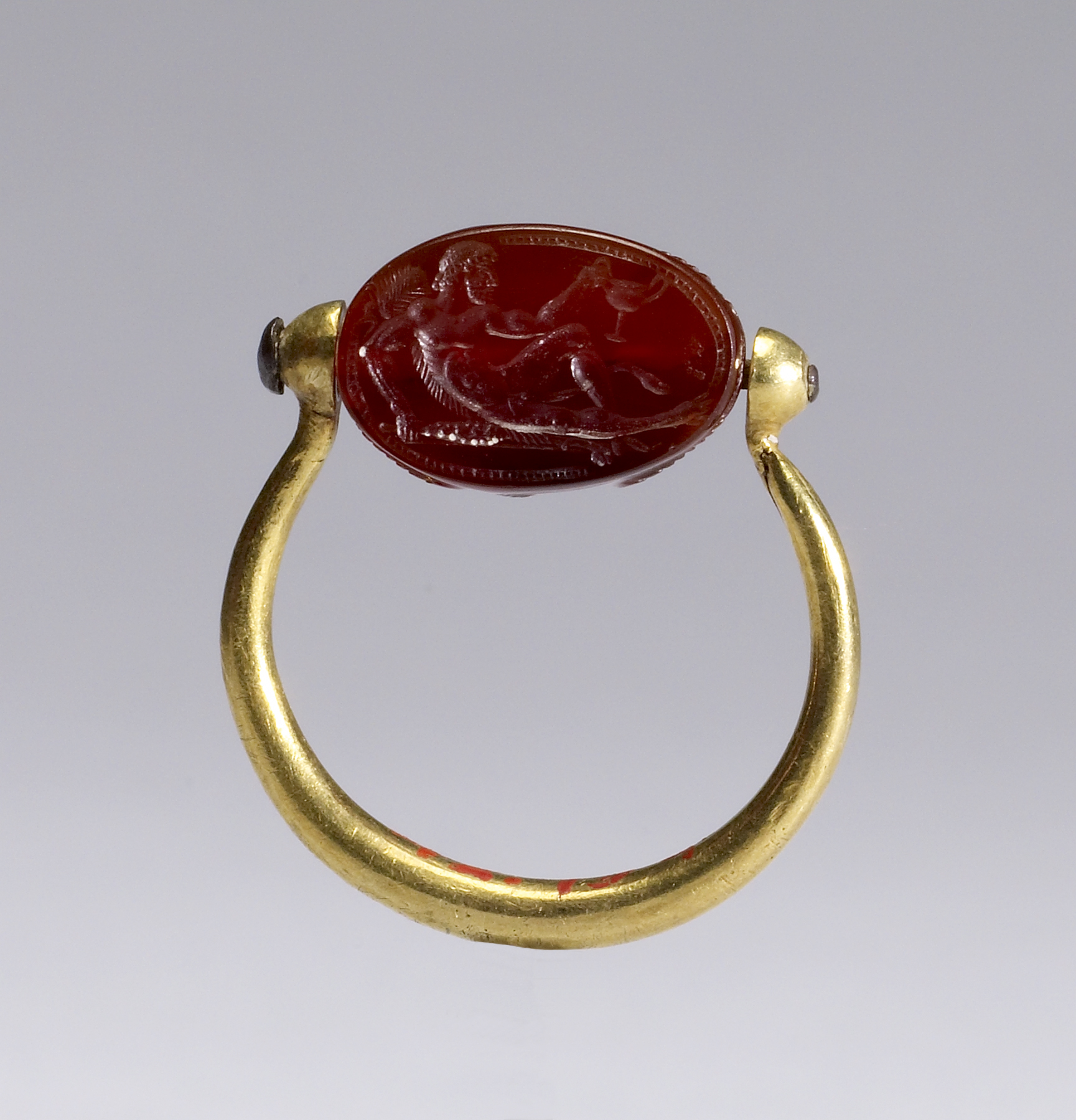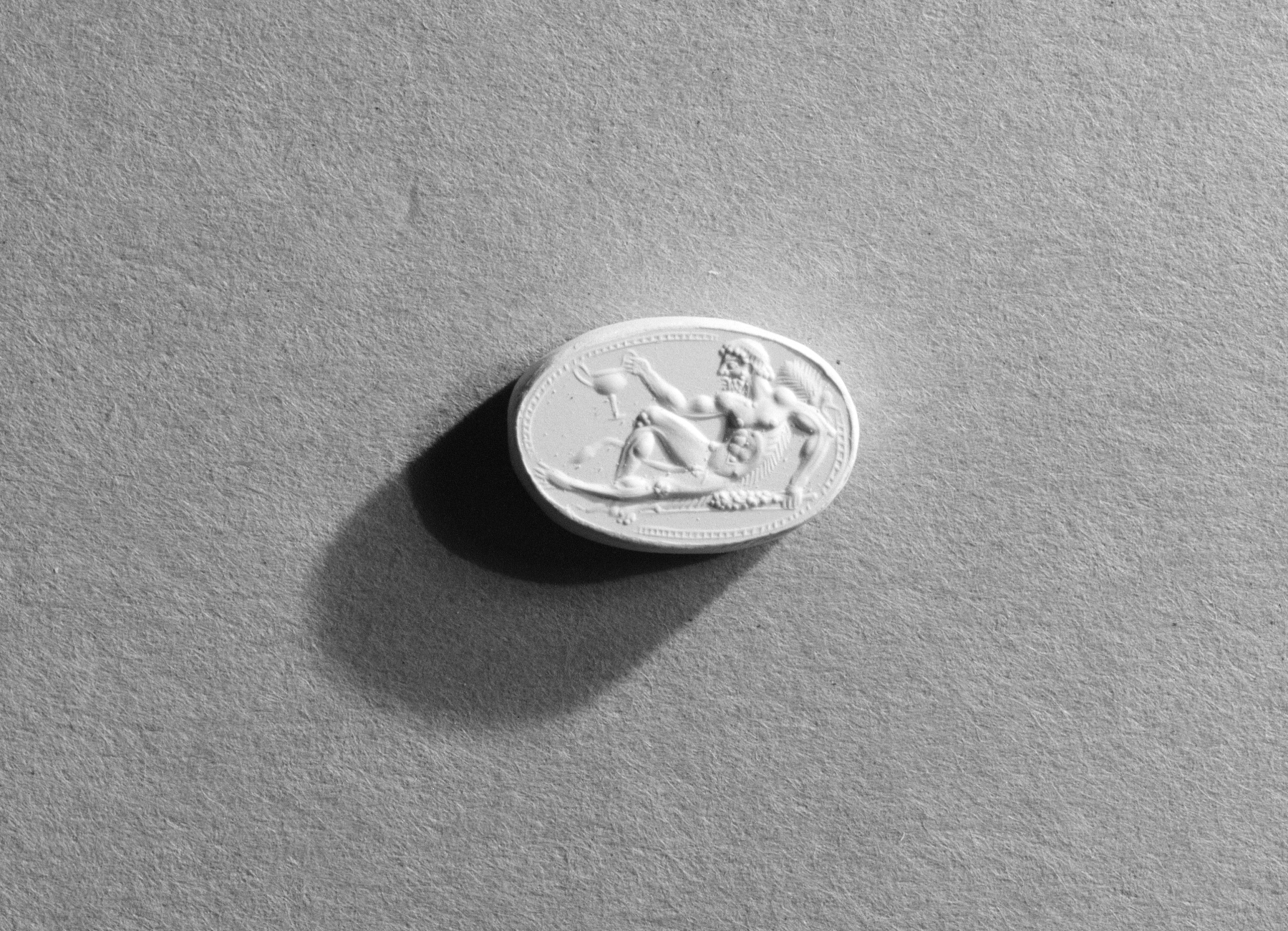Scarab with Reclining Herakles Set in a Swivel Ring
This scarab bears in image of the hero Herakles carved in intaglio. Herakles is in profile to the right and reclining on the skin of the Nemean lion. The tail is visible between the hero's legs while fur and a paw appear behind his back and below his right leg. His right hand rests with a club on the ground next to him, and he raises a large kantharos with his left hand. A tree behind the hero indicates the scene takes place outdoors. Depictions of Herakles reclining are attested as early as the 6th century BCE, but the sculptural type was introduced only in the 4th century BCE. It usually shows the aged and bearded hero resting from his labors and reclining as a symposiast, associating him with the world of Dionysos. It became a popular and widespread theme in Hellenistic and Roman times.
Provenance
Provenance (from the French provenir, 'to come from/forth') is the chronology of the ownership, custody, or location of a historical object. Learn more about provenance at the Walters.
Henry Walters, Baltimore, 1913, [mode of acquisition unknown]; Walters Art Museum, 1931, by bequest.
Exhibitions
| 2009-2011 | Heroes: Mortals and Myths in Ancient Greece. The Walters Art Museum, Baltimore; Frist Center for the Visual Arts, Nashville; San Diego Museum Of Art, San Diego; Alexander S. Onassis Public Benefit Foundation (USA), New York. |
Conservation
| Date | Description | Narrative |
|---|---|---|
| 8/15/1960 | Examination | other |
Geographies
Italy (Etruria) (Place of Origin)
Measurements
Ring H: 3/8 x W: 1 x D: 1in. (1 x 2.54 x 2.54cm); Gem H: 3/8 x W: 9/16 in. (1 x 1.5 cm)
Credit Line
Acquired by Henry Walters, 1913
Location in Museum
Not on view
Accession Number
In libraries, galleries, museums, and archives, an accession number is a unique identifier assigned to each object in the collection.
In libraries, galleries, museums, and archives, an accession number is a unique identifier assigned to each object in the collection.
42.494




